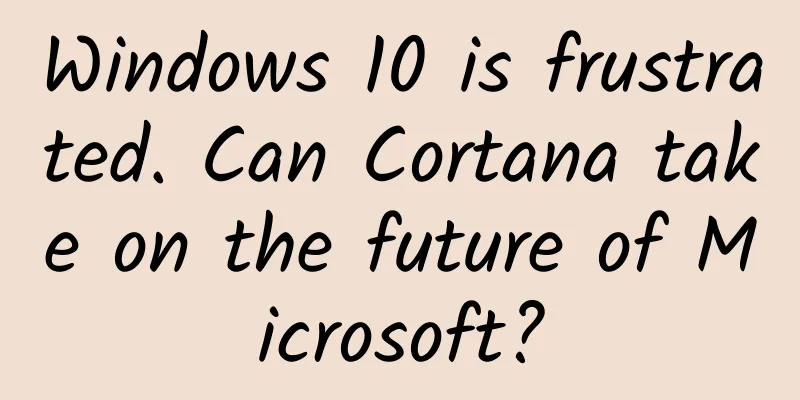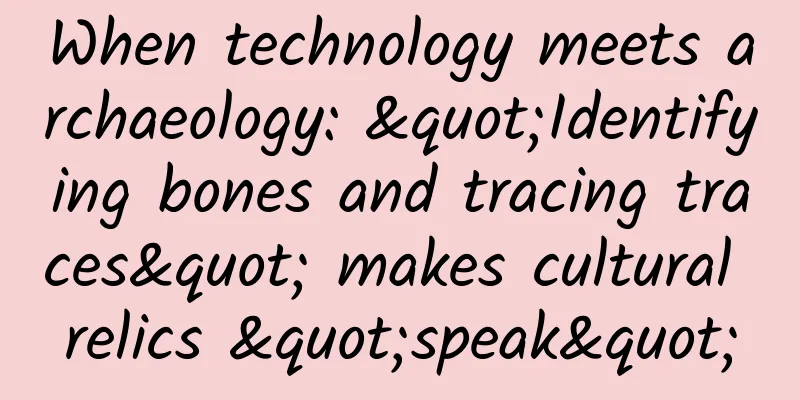Windows 10 is frustrated. Can Cortana take on the future of Microsoft?

|
In March, Microsoft reached a cooperation with hardware manufacturers such as Samsung and Dell to pre-install Microsoft applications on Android tablets. Now Microsoft has announced that it has reached a similar cooperation with more than 20 OEM manufacturers around the world, hoping to enable its Office applications to occupy the Android platform in a roundabout way. The weakness of hardware and the fall from favor of Windows forced Microsoft to change its product strategy. From the PC giant to Android, Microsoft, which lost the mobile market, decided to redeem itself with open source. Microsoft under Nadella's leadership is full of voices of change, and free and open have become the main themes of Microsoft's mobile strategy. So can Microsoft, which has lost its edge, rewrite its story? Microsoft's two burdens and three straws When the focus of the Internet shifted from PC to mobile, Microsoft can be said to be the earliest perceiver and foresighter. After all, Microsoft launched a mobile version of the operating system for handheld computers in 1996. However, Microsoft's regret is that it inherited the PC development strategy. Android was born in 2007, and gradually invaded the mobile phone and tablet market by relying on open source and free. In 2011, it surpassed Symbian for the first time in market share and became the largest. At the same time, Microsoft also stepped up its mobile market layout and officially released the smartphone operating system Windows Phone in 2010, but it followed the Windows strategy in promotion and did not follow Android. Then, with the idea of occupying hardware, Microsoft acquired Nokia Mobile for US$7.1 billion. It originally thought that it could create another iPhone, but the reality is that Lumia and WP have gradually become niche. WP's market share accounts for only 3.2%, and Lumia's sales are declining. WP and Lumia failed to become the backbone of Microsoft, but instead became a burden for change. In the Nadella era, Windows, Office and Cortana have become the three straws of change for Microsoft. Let's start with Windows. The release of Windows 10 has made many fans cheer, and the public opinion has always been favorable to Microsoft. Microsoft played three cards on Windows 10. The first is the free card. From the previous explanation of Microsoft's official blog, it is known that Win7 and Win8.1 users can upgrade for free within one year after the release of Windows 10, including pirated users. The second card is multi-screen integration, which is fully compatible with mobile phones, tablets, PCs, and wearable devices to make up for the lack of applications on a single platform and attract more developers to participate. Compatibility with Android and iOS applications can be said to be the third card of Windows 10. But we have to admit that the free version is only a concept. According to the latest news, pirated users still need to pay a certain fee to complete the upgrade. The purpose of multi-screen integration is nothing more than solving the application problem on the mobile phone side. The original intention of compatibility with Android and iOS applications is also based on this. However, WP's global share of 3.2% has hardly attracted the interest of developers. Most developers do not buy into Microsoft's plan to port Android and iOS applications. Given Microsoft's marginalization in the mobile ecosystem market, using Windows 10 to promote change is still a pseudo-op. Microsoft placed its second bet on application software such as Office. Since June last year, the iOS version of Office has been launched on the AppStore, and then the Android version has been launched. In February of this year, the iOS version of Office began to support Apple iCloud and other third-party cloud storage services, and more and more extended functions of Office have appeared on iOS and Android devices. Now Microsoft is directly cooperating with hardware manufacturers to pre-install Microsoft applications including Word, Excel, PowerPoint, OneNote, Onedrive and Skype on Android tablets. Before this, many people suggested that the opening of the Office series of applications was irrational for Microsoft, which would cause great damage to Microsoft's development in the mobile field and even threaten the market share of WP and PC. If Microsoft's move is to increase revenue, the simplest rebuttal is that Office is free on both iOS and Android platforms, which may be the most direct manifestation of Microsoft's transformation. Microsoft's voice assistant Cortana can be said to be the third straw. Since the launch of Microsoft Xiaobing, it has been praised by WP users. A series of actions on WeChat and Weibo have also made Chinese users no longer unfamiliar with Xiaobing. As an upgraded version of Xiaobing, Cortana supports voice functions and performs amazingly on WP phones and Microsoft Band. On May 26, Microsoft announced that it will launch iOS and Android versions of the voice assistant Cortana in the coming months. Compared with the closed loop of Siri and Google Now, Cortana has already taken an open path. The domestic iFlytek voice assistant has already taken root in Android and has become the default voice assistant for multiple mobile phone brands. Microsoft is not rash in treating this new product as part of the transformation. Windows 10+Office+Cortana, one represents the inheritance of the past, one marks the change of the present, and one implies the direction of the future. Kai-Fu Lee believes that Microsoft's glory has passed, and perhaps Nadella does not agree, but Microsoft's future may not be as glorious as it was yesterday. Microsoft's future is foreseeable The curtain call of each generation of giants is to shift from user services to enterprise services, from IBM to HP to the dying BlackBerry. In Microsoft's "mobile first, cloud first" strategy, in addition to favoring enterprise users in software and cloud computing, it has adopted a more open strategy in user services. In terms of the system, Nadella gave the answer of "Windows as a service", and also tried his best to get closer to user services in terms of applications. To give a simple example, the age-related website "How-Old.net" that was popular on the Internet some time ago was created by Microsoft, and Microsoft's own Bing image search has begun testing the integration of the "How-Old" age-related detection function. I believe that Microsoft will launch more services in the future, and eventually integrate these services into one product. Another fact is that Cortana has replaced Bing's voice search function, and application software from Windows 10 to office have also begun to build Cortana into them, and Nadella has also stood up for Cortana everywhere. Although Cortana is defined by the outside world as a product similar to Siri and Google Now, Microsoft sees it as a pioneering product that combines artificial intelligence. Whether it is Jarvis in "Iron Man" or Baymax in "Big Hero 6", the future of artificial intelligence is already visible. For Microsoft, whether it is software services such as Windows or intelligent cloud architecture, as well as the layout of HoloLens in the field of virtual reality, Cortana can be integrated into it and become a part of the service. The fact that Cortana is open to Android and iOS platforms shows that Microsoft hopes to integrate its voice assistant or artificial intelligence into more products and more platforms, and even become an indispensable service for future Internet products. It can be foreseen that Windows has made Microsoft's past, and Cortana will bear Microsoft's future. Microsoft is not the one that has gone the furthest in the field of artificial intelligence. Apple's Siri and Google's Google Now both appeared before Cortana, and both are eager to try their hand at artificial intelligence. Baidu and iFlytek from China and many startup teams are eyeing service-oriented artificial intelligence. Microsoft has made many achievements in the past, but these achievements are hindering its future development, such as its mobile phone business, which has long been stuck in a quagmire. Microsoft's future is worth looking forward to, but whether it will sink or remain strong, time will tell. |
<<: Apple Developer Conference preview: In addition to iOS 9, here are some other things to watch
>>: The details that make or break things: The little-known highlights from Google I/O 2015
Recommend
Xianyu is entering the used car market again. Can it counterattack Guazi and Youxin?
Recently, Xianyu's affiliated company Zhejian...
How to improve the effective conversion rate when running advertisements?
In the process of search advertising , many corpo...
Watching videos on your phone, getting more and more addicted - is being addicted to social media a disease?
In addition to meeting strict disease diagnostic ...
Wending technology shows its advantages again, helping Ruipu Lanjun win the first place in the field of 320Ah energy storage batteries
In the energy storage market, although the 280Ah ...
Huawei Mate 2 User Experience
Let me start with the advantages: 1. Battery: I u...
Is there no place for medical soft-text promotion anymore? Sogou follows Baidu in launching a big move!
Following Baidu's release of the " Notic...
How to trigger user growth?
My topic today is "Exploding User Growth &qu...
How can migrant workers apply for online legal aid during the epidemic? What changes have there been in employment channels?
Because of the epidemic, many migrant workers or ...
Foreign media: Smartphone market saturation is good for Google and can stimulate its growth potential
The online version of the Wall Street Journal pub...
What gifts should I give to girls for Christmas?
Christmas is coming soon, and many couples will c...
Latest research: Will intermittent fasting cause baldness? Scientific maintenance methods revealed!
As a popular diet, intermittent fasting has attra...
A seemingly romantic killer - thick "fog" ahead
Produced by: Science Popularization China Author:...
SEM must-read information: How to manage a giant account, the results will shock everyone!
As the company expands, there are more and more k...
Apple closes iOS 15.0.2 system verification channel, and cannot downgrade after upgrading to iOS 15.1
On November 3, after releasing the official versi...
Contribution | How to build a team operation system before the product goes online?
A friend found me through Zaixing to consult abou...









